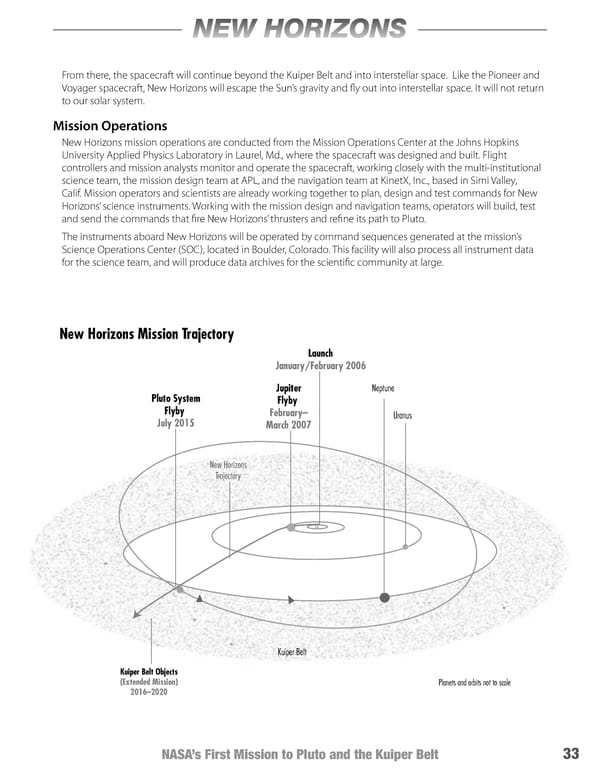NEW HORIZONS From there, the spacecraft will continue beyond the Kuiper Belt and into interstellar space. Like the Pioneer and Voyager spacecraft, New Horizons will escape the Sun’s gravity and fly out into interstellar space. It will not return to our solar system. Mission Operations New Horizons mission operations are conducted from the Mission Operations Center at the Johns Hopkins University Applied Physics Laboratory in Laurel, Md., where the spacecraft was designed and built. Flight controllers and mission analysts monitor and operate the spacecraft, working closely with the multi-institutional science team, the mission design team at APL, and the navigation team at KinetX, Inc., based in Simi Valley, Calif. Mission operators and scientists are already working together to plan, design and test commands for New Horizons’ science instruments. Working with the mission design and navigation teams, operators will build, test and send the commands that fire New Horizons’ thrusters and refine its path to Pluto. The instruments aboard New Horizons will be operated by command sequences generated at the mission’s Science Operations Center (SOC), located in Boulder, Colorado. This facility will also process all instrument data for the science team, and will produce data archives for the scientific community at large. New Horizons Mission Trajectory Launch January/February 2006 Jupiter Neptune Pluto System Flyby Flyby February– Uranus July 2015 March 2007 New Horizons Trajectory Kuiper Belt Kuiper Belt Objects (Extended Mission) Planets and orbits not to scale 2016–2020 NASA’s First Mission to Pluto and the Kuiper Belt 33
 New Horizons Page 42 Page 44
New Horizons Page 42 Page 44